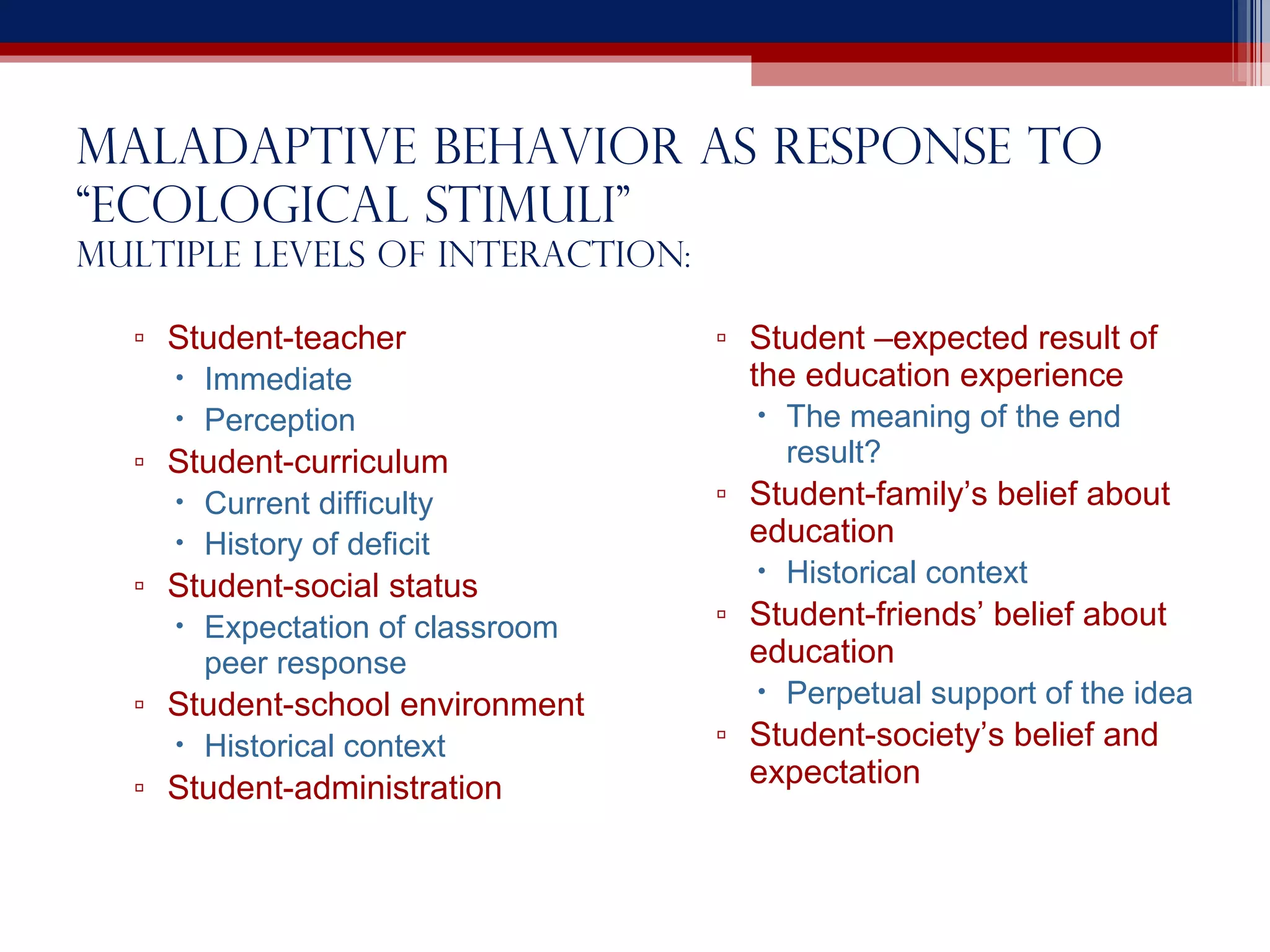1. The document discusses positive behavior support approaches for managing behavior in the classroom. It emphasizes understanding behavior as communication, presuming student intellect and interest in improving, and avoiding reinforcing negative behaviors.
2. Research shows teachers' perceptions and expectations can negatively impact student achievement, especially for African American students. These perceptions are often based on stereotypes rather than reality.
3. Maladaptive student behaviors result from multiple influences, including student-teacher interactions and environmental factors. Positive behavior support addresses the underlying causes through communication and support instead of punishment.



![Student-teacher interactions Survey by Casteel (1997) [as cited in Furguson (2003)] 70% of African American students sought to please teacher with schoolwork 30% of Euro American students sought to please the teacher, most sought to please the parent Teacher mediates the relationship (as the adult or authority) Predicated on the teacher’s preconceived notions and expectations Indirect influence on student achievement Greater impact on African American students](https://image.slidesharecdn.com/positivesupportapproachtobehaviormanagementintheclassroom-13226006325341-phpapp01-111129150530-phpapp01/75/Positive-Support-Approach-To-Behavior-Management-In-The-Classroom-4-2048.jpg)


![MetLife Annual Survey on Teaching (Metlife, 2000, p. 184)* N = 3,961 39% minimally or don’t trust the teacher, but … 47% of minority students don’t trust the teacher 53% of poor students don’t trust the teacher *[as cited by Noguera (2003, p. 449)]](https://image.slidesharecdn.com/positivesupportapproachtobehaviormanagementintheclassroom-13226006325341-phpapp01-111129150530-phpapp01/75/Positive-Support-Approach-To-Behavior-Management-In-The-Classroom-7-2048.jpg)

![From a hermeneutics framework * What is your perception of your students? Where did this come from? Realistic or stereotype Why does it persist? Question: How would this affect our interactions with our students? Prior to self-reflection? After self-reflection? [see also Ferguson (2003) for info on detrimental results of teachers’ perceptions and expectations] * (Nakkula & Ravitch, 1998)](https://image.slidesharecdn.com/positivesupportapproachtobehaviormanagementintheclassroom-13226006325341-phpapp01-111129150530-phpapp01/75/Positive-Support-Approach-To-Behavior-Management-In-The-Classroom-9-2048.jpg)














